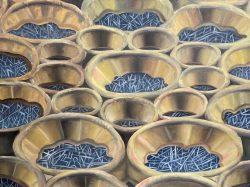Inspiring A level Art Lesson
It was a real privilege to visit Miss Cole and her A level Year 12 Art class on Monday of this week and see such inspiring work being undertaken and completed. Amazing progress...
Filter by Category
Filter by Author

























































































































































































It was a real privilege to visit Miss Cole and her A level Year 12 Art class on Monday of this week and see such inspiring work being undertaken and completed. Amazing progress...
Posted by Jeremy Turner

Thousands of people are dying, And the world sits back, crying, The world leaders get up, this has to stop, Tottenham’s trophy cabinet dust is flying. Arsenal fans are...
Posted by Anthony Carter

How to feel more confident about exams What are negative beliefs? Many people with high exam anxiety can’t stop worrying about failing or the consequences of failing. For...
Posted by Mo Abusef

On Thursday 2nd February, a group of around 40 maths students from year 11, 12 and 13 went on an exciting trip to the Formula One Racetrack, Silverstone. On our arrival, we were...
Posted by Lara Timmins
Our ‘Time2Sh9e’ group of year 11s are our top students in the year – those that all indications suggest should be achieving the very top grades in some subjects. Over the...
Posted by Stephanie Knowles

It’s the time of year when the key focus us on revision. Teachers of Year 11 and 13 are coming up with innovative ways to help the students revise and support them through the...
Posted by Tracy Greenwood

Posted by Danielle Bowe

Year 8A Boys v St Michaels Mr Harris Date: Friday 21st April 2023 Result: Won 5 – 4 on penalties (3 – 3 end of normal...
Posted by Ashley Cartledge

On Friday 21st April, over 90 year 7 students descended upon Mountfitchet Castle in Stansted Mountfitchet, Essex. This reconstruction of a Motte and Bailey Castle tied in...
Posted by James Burley

We all like to share our experiences when taking exams and sharing ideas with others online can be helpful when you’re studying or revising. However, it is important to consider...
Posted by Mo Abusef
Almost everyone has a mobile phone. They have become even more important recently for staying in contact with friends, playing games and even keeping up to date with school work especially during lockdown.
But what is your phone made of, and how do these components work?
Your body is made up of about 24 different elements that work together to make you but your mobile phone is even more complicated as it contains more than 38 different elements many of which are much harder to find on Earth than the ones that are inside you.
This video shows how some of these rare elements are used to build the components of our mobile phones, and explains how these components work to build touchscreens, vibrating motors and cameras.

Did someone say we’re about to experience a HEAT WAVE?!! Why not cool yourself down with a few WATER BOMBS!!! That’s right, this week’s STEM Challenge involves...

It was a truly inspiring experience to be able to attend this year’s annual Design and Technology Celebration Evening hosted by our dedicated Head of Faculty Mr Chalkley and...